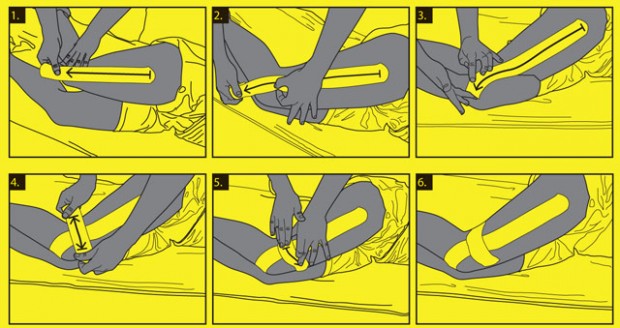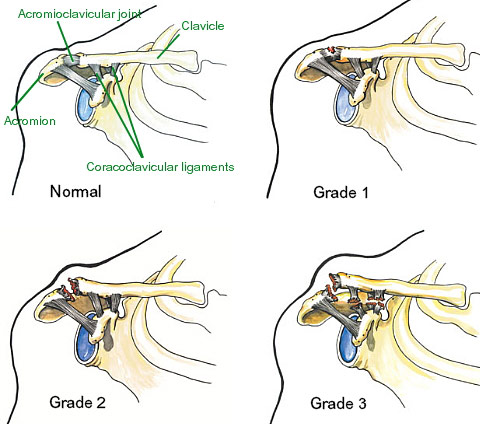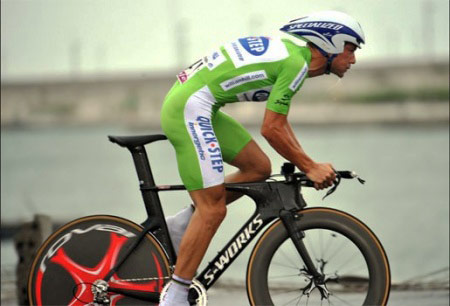The increased popularity with cycling both road and mountain bikes has seen an increased rise in cycling related injuries. Competitive cycling involves high speeds created by large gradient down hill sections and this can lead to falls. The higher the speed the greater the forces sent through the body and generally the more serious the injury, hence the essential helmet.
The TA Physio Top 5 Cycling Injuries:
Lower Back Pain
What is it?
The repeated and prolonged held position in cycling means stress goes through the whole of the spine. The flexed position required to maintain good aerodynamic performance and generate force to pedal leads to lower back pain. In some cases this can lead to herniated lumbar discs and nerve root oping nets, but this is rare.
Prevention:
Prevention is better than cure. Back pain can be avoided by simply having your bike set up correctly to avoid over reaching in the case of a frame being too large and hunched posture in the case of the frame being too small. Check out this frame size calculator. It is also essential to warm up, head to toe, cycling mainly involves the lower limbs but the spine is involved. Don’t neglect it!
ITB Syndrome
What is it?
The ITB (Iliotibial Band) is highly talked about in rehabilitation and physiotherapy. It’s seen as a problem in many knee injuries and is commonly affected amongst cyclists due to the repeated bending and straightening of the knee. It runs from your hip to the outside of your knee, so The repetitive motion of cycling, or running, can lead to ITB becoming irritated as it moves over the outside of the knee.
Prevention:
The prevention if ITB Syndrome is down to bike set up. Saddle height dictates knee position, if its too high then the knee over straightens, if its too low then the knee over bends. Ideally, the frame should have 1-2″ clearance from crotch to the top tub of the frame. The saddle height should be set to allow a small knee bend when the pedal reaches the bottom of the revolution. Also, Its advisable to avoid in toeing when cycling, this increases the stress through the ITB. The ITB can be offloaded and supported through the cycling motion with some SportTape Kineisiology tape.

AC Joint Sprain
What is it?
The Acromioclavicular (AC) Joint is one part of the shoulder complex and consists of the collar bone joining to the front of the shoulder blade which is held together by strong ligaments. An AC joint sprain refers to damage to these stabilising ligaments. It takes a large force to cause these sprains such as a fall or launching into a monster drop such as a pothole or off-road obstacle.
Your elbows and wrists are generally locked in position when holding handlebars on a bike. When a large force is applied, these forces are transferred up to the shoulder joint.

Prevention:
The simple answer is to avoid falling. The AC Joint is vulnerable to injury during falls and large front wheel forces created by those lovely potholes. Try to use the elbows as a shock absorber if your can’t avoid those huge public road ruts and bumps. AC Joint sprains occur at different degrees, and the severity of the injury dictates what can be done to rehab it.
4) Cuts, Grazes & Burns
What are they?
Cuts and grazes generally occur as a result of falls to the ground, but most cyclist in competitive sport suffer friction pains at some point in their careers.

Photo: www.vandaag.be
The common-most location for friction to occur is where rider meets bike- the saddle. Saddle sores are common amongst amateurs but miraculously professionals and regular cyclists develop an iron-like resilience to this issue.
Prevention:
Cuts and grazes can be avoided by concentrating on your ride and staying on your bike- there is no room for daydreaming in competitive riding.
Saddle sores can be avoided somewhat by a comfortable saddle, correct saddle angulation and sufficient cycle short padding. The more you ride, the easier it gets, so ride regularly and get used to it. It may be possible settle this post-ride by sitting on an ice pack for 10 minutes but this may raise some eyebrows in the post-ride pub.
5) Foot Numbness
What is it?
Foot numbness is a loss of feeling in the feet. It is common amongst cyclists and its not solely down to the cold weather we endure in the UK. Ill-fitting cycling shoes squeezing the metatarsal heads, cleats being placed too far forward causing increased pressure around the ball of the foot or cycling technique including low cadence and excessive hill riding can all lead to numbness problems.
Prevention:
Prevention of foot numbness can be achieved through correctly fitting shoes. Position of the cleats is also important- ensuring that pressure is not focused on the ball of the foot. Hill climbing is important in cycling events too but hill training should be tapered, so reducing hill climbing may help alleviate the problem. Hill climbing involves excessive push phases of cycling which means increased foot pressure, hence numbness.